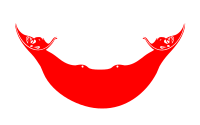Anthony Barreiro wrote:Would someone please be so kind as to help me get oriented to the sky in this picture? Which direction are we facing? What constellations are we looking at? What are the bright stars, clusters, and prominent nebulae? Thanks.
We are looking at Sagittairus, Scorpius, Centaurus, Crux and a bit of Carina, and you can see a few more obscure constellations, such as Norma and Ara.
Count the statues from the left and stop between statue number two and three. Between and above their heads is the
Teapot of Sagittarius. As you can see if you follow the link, a puff of smoke appears to emanate from the spout of the teapot. That "puff of smoke" is actually a part of the bulge of the Milky Way, and this particular bright area is called The (Large) Star Cloud of Sagittarius.
Another bright spot is seen to the right of the Star Cloud of Sagittarius. If you check out the link again, you can see that this bright spot is actually the young and relatively bright cluster Messier 7, seen against a starry background. Between and "above" the Star Cloud of Sagittarius and Messier 7 (or M7) is another cluster, M6.
When you have found M6, proceed almost "straight up". You will come to a bright star above the dust lane of the Milky Way. This star is actually Antares, and you have come to the "
Upper Scorpius" region.
Return "down" to the Sagittarius Star Cloud and M7 again, and proceed to the right inside the dark dust lane of the Milky Way until you come to an
"arc-like" structure. This is a rich star formation region in Scorpius centered on the brilliant young cluster NGC 6231.
The next (modest-looking) brightening in the dust lane is found in the constellation Ara and marks the position of a small but remarkable cluster, NGC 6193. The primary star of that cluster, HD 150136, is an extremely rare O-type star, classified by some astronomers as a star of spectral class O3.
To the right of the NGC 6193 cluster is another brightening, centered on rich cluster NGC 6167. If you follow
this link, you can see the rather large pink emission nebula surrounding NGC 6193 at center left and the small bright compact cluster NGC 6167 at center right.
Now proceed some distance to the right until you come to two bright and obvious stars. They are Alpha and Beta Centauri. Alpha Centauri is of course the nearest of all stars apart from the Sun. Some distance to the right of Alpha and Beta Cen is a dark cloud, the Coalsack of Centaurus. To the right of the Coalsack is Crux, the Southern Cross. Check out
this link to see Alpha and Beta Centauri, the Coalsack and the Southern Cross.
Near the upper right corner of the picture is another small arc-like structure. That is rich cluster
NGC 3532.
At the extreme far right, you can see a bright structure which is actually the great Eta Carina Nebula! Check out
this link to see both the Carina nebula and the arc-like cluster NGC 3532 to the left of the Carina Nebula.
Finally, almost "straight below" NGC 3532 is a struture that looks a bit like an upside down "v". That is cluster
IC 2602.
Ann
 Milky Way Above Easter Island
Milky Way Above Easter Island